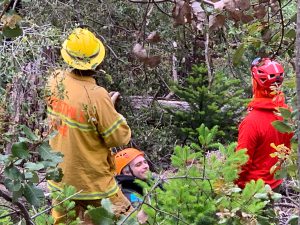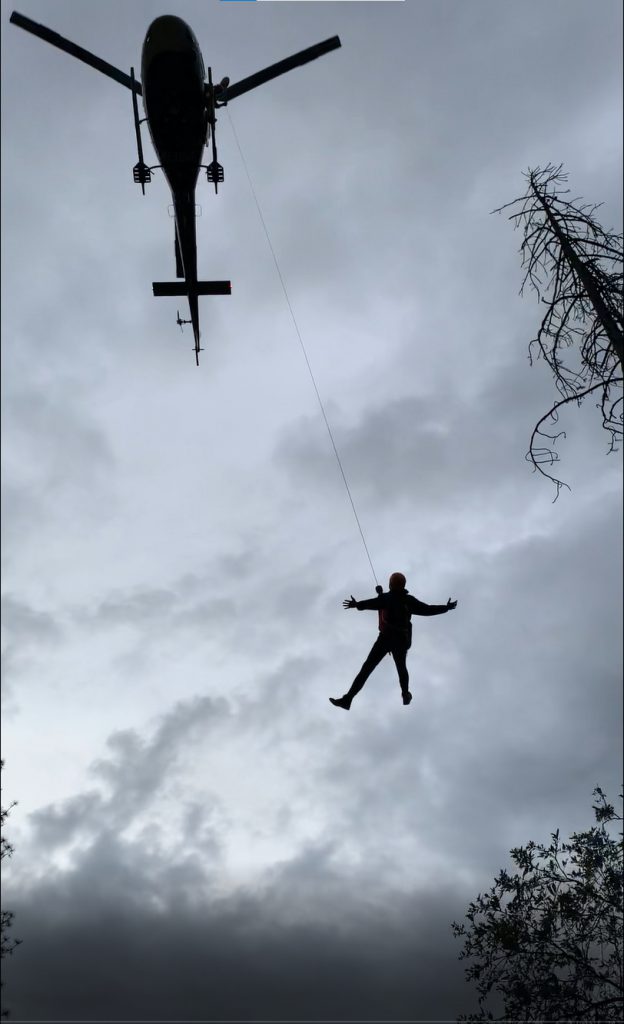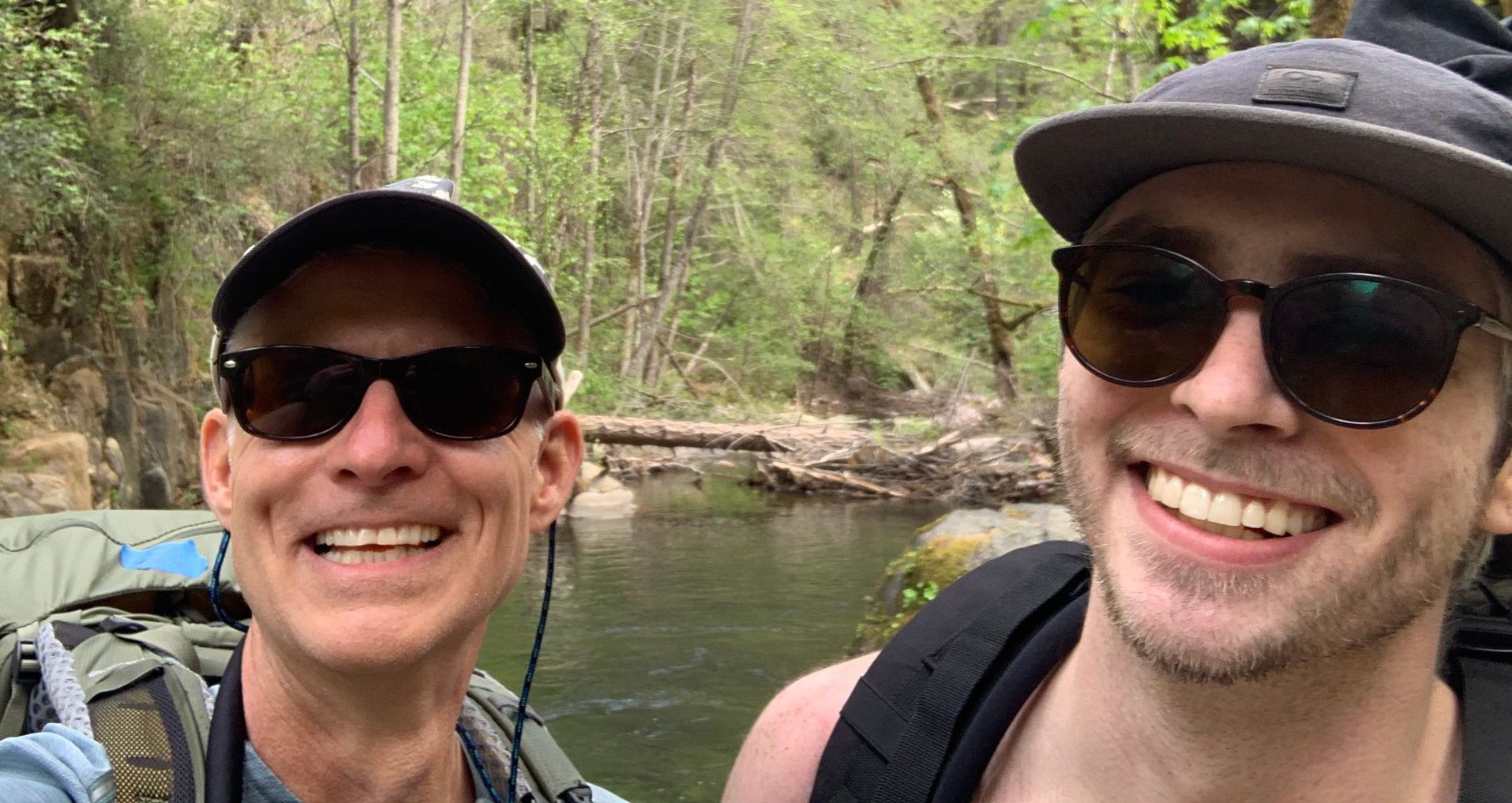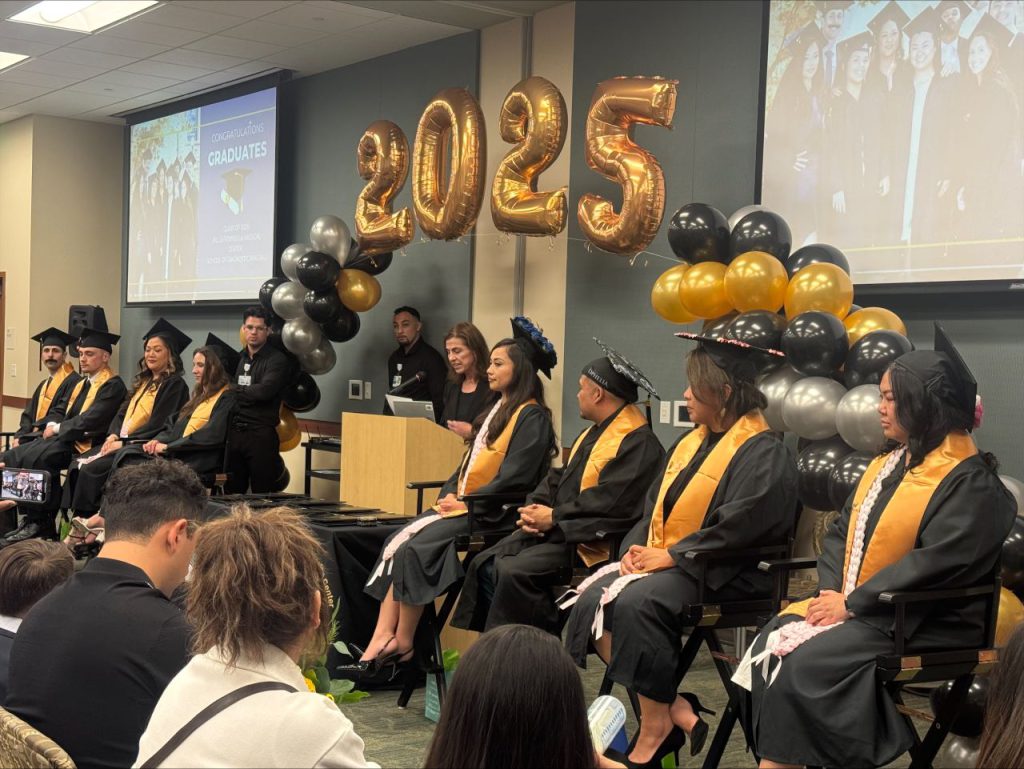By Rachel Merriman, Vitals contributor
David Lee clicked on his headlamp as the last beams of sunlight filtered through the dense brush near the top of Bake Oven Trail. Although an avid hiker, he was not all too keen to set off on a 6-mile-long treacherous nighttime hike — and to his surprise, it would turn out to be just the beginning.
Earlier that day, David and 26-year-old son Brian had set out for an overnight hiking trip just outside Auburn, Calif. They had been hiking on a steep incline for about 4½ hours when Brian’s left hand started to tingle. It wasn’t long before Brian’s feet and lips were also tingling, and he lost all control of his tongue and mouth. With Brian’s speech rapidly slurring, David asked Brian if he could count down from 10.
“I’m pretty sure my speech was gone before I even made it to nine,” Brian said. “It was terrifying to lose all control like that.”
They would later learn these symptoms stemmed from a transient ischemic attack – more commonly called a TIA or mini-stroke.
The father and son duo were 6 miles into the trail with two 30-pound hiking backpacks and no cell service. It had been a difficult trek up the mountain to begin with – they’d veered off course after discovering several fallen trees that blocked part of the trail just a few miles in. As a result, they found themselves in a small clearing at what they guessed to be an elevation of 3,000 feet with an unclear return path.
Although Brian’s event only lasted a few minutes, David recognized the signs and knew they needed paramedics. In fact, the American Stroke Association warns about TIA and urges anyone witnessing or experiencing the symptoms Brian exhibited to seek medical help as soon as possible.
“A stroke or TIA can affect anyone,” said Judy Peck, MD, who later treated Brian at Sutter Auburn Faith Hospital. “Brian and his dad recognized the speech difficulties and sought medical care. This is the most important step in the care of TIA and stroke patients. The National Stroke Association uses the FAST acronym to educate the public: Facial drooping, Arm weakness, Speech difficulties and Time. (David) did the right thing when he sought timely medical evaluation.”
David swiftly set up their tent, hung a flashing light from a nearby tree and poured all but one inch of his water into Brian’s water bottle. Thankfully, he was prepared with a water filter and knew he could find fresh water on the way out.
“Honestly, I was very scared,” David later said. “I knew I needed to leave him there and hike back down the mountain to get help. But first I had to find the trail, and at this point I was losing light by the minute. I knew it would be hours before help would arrive, and I couldn’t let my fear slow me down.”
And down the mountain he went.
Coming to David’s Rescue
Four hours later, at around 10 p.m., David discovered a cluster of cabins near the trail base and started knocking on doors. A group of young men who were renting a cabin in the isolated area let him in, filled his water and charged his phone. Placer County Search and Rescue dispatched a helicopter to locate Brian, as well as a team that included two volunteers, two firefighters and an on-call Sutter Health-affiliated physician.
And although David had marked their coordinates before hiking back down, the trail was still obscured by fallen trees and the group needed his help to locate Brian. At 11:30 p.m., the group embarked on David’s second 6-mile hike up the mountain.

Foresthill Fire Protection District and Placer County Search and Rescue hook Brian Lee into a harness prior to reeling him up into a California Highway Patrol helicopter.
While the group trekked through the underbrush and over fallen trees in the dark, the Search and Rescue helicopter circled the area in search for Brian.
“I heard the helicopter flying in circles overhead for at least 20 minutes before they found me,” Brian said. “They told us they found me because of the flashing light my dad had hung in the tree near our tent.”
Once he was located, Brian communicated with the helicopter overhead by flashing his light in response to their questions over the loudspeaker. The helicopter tried to find somewhere to land, but eventually had to turn back. In the meantime, Search and Rescue looked for a helicopter that could transport Brian via airlift rather than landing.
David and the two firefighters found their way back to Brian by 2:30 a.m. Brian was alert, and triage determined he was not in urgent need of medical attention.
Around 3:30 a.m., Search and Rescue attempted to send a larger Chinook helicopter from a Navy base in Nevada to extract everyone together, but the massive chopper was forced to turn back when it hit bad weather over the pass.
By 5:30 a.m., Steven Vilter, M.D., and a Search and Rescue member reached the campsite. Dr. Vilter is a recently retired Sutter Medical Group physician who has been back as a supplemental physician throughout the COVID-19 pandemic. After Dr. Vilter assessed Brian, he determined Brian couldn’t safely hike back down the mountain – but it wasn’t until 7 a.m. that a helicopter was able to reach them. Brian was hooked into a harness below a California Highway Patrol helicopter and reeled up into the aircraft.
“You know, they tell you those things are loud,” Brian said with a laugh. “But they are so much louder than you could ever imagine. I felt like I was in a wind tunnel when they pulled me up. It was just insane.”
As the California Highway Patrol helicopter transported Brian down the mountain, David and the rescue group began their hike back on foot – again.
“The most important thing to me was that my son was all right,” David said. “I knew my body was exhausted, but at that point my adrenaline was carrying me back down the mountain.”
Community Hospital Well-Prepared for Strokes
The California Highway Patrol helicopter landed in an empty high school parking lot and was greeted by an ambulance that would take Brian to Sutter Auburn Faith Hospital nearby. With just 64 beds, Sutter Auburn Faith is a well-equipped hospital with a community feel, located at the base of the Sierra Nevada mountains.
“I couldn’t believe how cool everyone was – from the Search and Rescue team and firefighters to my care team at the hospital,” Brian said. “When I told my doctor and nurses what had happened, they were stunned.” Brian let out a laugh and continued, “They said, ‘Oh man, it sounds like you had a really rough night.’”

California Highway Patrol reels Brian Lee up into their helicopter for an air lift off the mountain.
While David wrapped up his fourth and final hike of the day, the team at Sutter Auburn Faith ran several tests to determine the cause of Brian’s TIA. In addition to learning that he had a brain lesion, Brian learned that a TIA often foreshadows a full-blown stroke. In fact, according to the American Stroke Association, a TIA happens before about 12 percent of all strokes, and about 9-17 percent of patients who have a TIA have a stroke within 90 days.
Despite the gravity of this news, Brian was happy he didn’t need any immediate surgical procedures – in fact, he was just excited he could finally eat some food after the harrowing experience.
“I kept telling my nurse that she was an angel,” Brian said. “I really didn’t want any of them to see me get ‘hangry’ – you know, angry when hungry. But I couldn’t eat anything until I knew I didn’t need surgery.”
Brian’s nurse even had a tray of food waiting for him around the corner and was ready to swoop in the minute Dr. Peck said he could eat.
“The whole team at Sutter Auburn Faith was incredible,” he said. “They were attentive, compassionate and honestly really cool. And my nurse – she was the best. She even brought me a La Croix!”
Among the care team members who stood out to Brian were Dr. Peck, an emergency physician and Stroke Champion for Sutter Auburn Faith; Emergency Department tech Tina Lugo; and registered nurses Davita Hedges, Caryn Simone and Lynn DiVecchio.
“I guess you could say that teamwork is at the heart of all good medical care,” said Dr. Peck. “But the reason that it all works, the reason that our patients are happy with us and the reason that we passed our recent Joint Commission stroke survey with flying colors is that we care. We care about our patients and we treat them as we would a family member. When (Brian) came in, he looked so healthy. He was young. His symptoms had resolved. He was not your typical TIA patient. It would not have been unreasonable to discharge him home to get a thorough evaluation from his PCP (primary-care physician), but it’s not what I would want for my (family member). I would want them to get the full work-up in the ED, so that’s what I did.”
Although the statistics following a TIA are alarming, awareness and immediate treatment are key life-saving components. Some risk factors include smoking, cardiovascular disease, diabetes and blood clots called embolisms.
“Honestly, I have been trying to quit smoking for years,” Brian said. “This was definitely a wake-up call.”
Brian and David are both back home and feeling much better. As Brian embarks on his next trek – the road to recovery – they both share immense gratitude for their rescue team and Brian’s care team. In total, David hiked about 30 miles in less than 24 hours – and likely saved his son’s life as a result.
“Not very many things scare me,” David said. “I would do it all over again if it meant my son would be alright. Although now I have to say … I think I’ve earned a nap.”
May is Stroke Awareness Month
#RelentlessTogetherNational Stroke Awareness Month was created in May 1989 to promote public awareness and reduce the incidence of stroke in the United States. While many things have changed in the last 32 years for the better around stroke care, no one at the time of its creation could foresee what we have gone through in the last year alone.
The family of Brian and David Lee would like to thank the care team at Sutter Auburn Faith Hospital for their compassionate care, as well as the Foresthill Fire Protection District, Placer County Search & Rescue, Placer County Sheriff’s Department and the California Highway Patrol for their incredible efforts.





